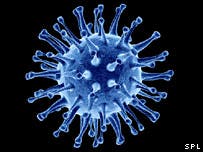
Bird flu first surfaced in Asia, and a couple of years ago the first bird flu human cases appeared, engulfing the world in a pre-pandemic panic. Since then, billions of dollars have been spent on vaccines, while other billions of chickens had been killed in efforts to contain the pandemic. Avian influenza has infected so far 600 humans, of which 353 died, translating in a 59% mortality rate – all of the deaths occurred in Eastern Asia and the Middle East.
[Related] Dutch researchers create super influenza with the capacity of killing billions
Cases have been rare though, since spreading between humans is highly inefficient for the virus. But this could take a turn for the tragic, if the virus becomes stable, by means of a single mutation, as Kawaoka found. Discovering “that HA needs to be stable to be transmissible through the air between mammals” is a key finding, says influenza virologist Wendy Barclay at Imperial College London.
“Our study shows that relatively few amino acid mutations are sufficient for a virus with an avian H5 hemagglutinin to acquire the ability to transmit in mammals,” says researcher Yoshihiro Kawaoka.
Following a review from the National Science Advisory Board for Biosecurity, the agency recommended that much of the information be redacted. However, in light of arguments which have the benefits outweigh the perils, the paper has been publicly published.
“This study has significant public health benefits and contributes to our understanding of this important pathogen. By identifying mutations that facilitate transmission among mammals, those whose job it is to monitor viruses circulating in nature can look for these mutations so measures can be taken to effectively protect human health.”
The team combined the mutated HA gene with seven other genes of the highly transmissible if not highly deadly H1N1 strain, which caused the 2009 flu pandemic. The hybrid virus evolved further after Kawaoka’s team gave it to ferrets — the best animal model for human influenza. After a few days, one of the ferrets acquired tens of thousands of more viruses than the other ferrets, after it had acquired a third HA mutation: from asparagine to aspartic acid. Afterwards, the hybrid virus spread from ferret to ferret relatively easily which had their cages in close proximity. A worrying fact is that the transmission was airborne.
No ferrets were killed, and it is unclear whether the virus could spread between humans as well as it did between ferrets, or whether the four HA mutations would confer the same ability on a purely H5N1 virus. However, and the new virus remained vulnerable both to the antiviral Tamiflu and a prototype vaccine against H5N1.
In the face of various H5N1 strains that might or already have mutated to attack humans, Kawaoka’s research, as well as Fouchier’s equally controversial work which is expected to be published soon in the journal Science, is indispensable to tackling and preventing a major pandemic, which might prove to deadly for the human race, otherwise.
The study provides “the first clues about what properties of the HA protein, other than receptor specificity, might be important for mammalian airborne transmission”, says Vincent Racaniello, a virologist at Columbia University in New York. “It would have been a huge loss not to publish this.”
source : Nature









